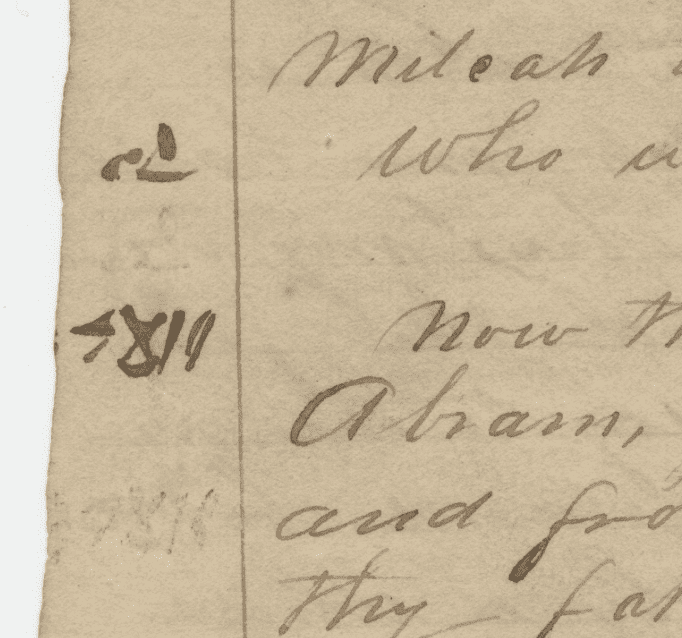I think the average LDS person still has little appreciation for recent discoveries in the Arabian Peninsula over the past couple of decades that provide interesting evidence for plausibility of the Book of Mormon account. These discoveries also strengthen our understanding of the text. For those following such Book of Mormon issues, take a look at Warren Aston’s article in the latest issue of Wildlife Middle East (vol. 6, no. 4, March 2013). Warren’s article, “Arabia’s Hidden Valley: A Unique Habitat in Dhofar Captures Arabia’s Past,” does not mention the Book of Mormon or LDS issues, but the site he treats in his secular article is also a leading candidate for ancient Bountiful that is found nearly due east of the ancient burial place Nehhem/Nahom, as Nephi wrote in his First Nephi account of crossing the Arabian Peninsula.
His article, the cover story for this edition of the publication, includes some great photos of the Khor Kharfot site at the mouth of Wadi Sayq, and also discusses biodiversity in this region. Photos of native figs and dates are included, as are some photos of the large freshwater lagoon that would have been a big part of why a weary band of travelers might call that spot Bountiful. Knowledge of the biodiversity there helps us better appreciate what Lehi and Nephi may have found, though some things have certainly changed since 600 B.C.
I had some trouble downloading the PDF file for the newsletter, and if you also have trouble, let me know and I can email you the PDF file directly.
You can also access current and past articles from Wildlife Middle East at http://www.wmenews.com/newsletters.php.











The Pre-Muslim part of the name is very interesting as well…
Jeff,
The biggest problem for this site is the lack of wood suitable for ocean shipbuilding. The two trees available, Tamarind and Sycamore, are softwoods and, in my understanding, absorb water.
Arthur Ashe is suggesting Nephi imported Teak wood from India. But, that creates its own set of problems.
Tamarind and sycamore are both hardwoods, actually. But that term describes the type of plant and its structure, not the hardness of the wood. Softwoods are coniferous trees, typically evergreen, with needle-like leaves, such as pine, spruce, cedar, fir, larch, douglas-fir, hemlock, cypress, redwood, and yew. Hardwoods are deciduous trees with broad leaves that tend to be lost annually.
Are these woods unsuitable for shipbuilding? I'm not sure the case against them is clearcut. Rex Jensen's article, "Where Did Nephi Build His Ship?" has a photo from near the Kharfot site showing tall and relatively straight trees with this caption: "Large sycamore, tarmarind, and boscia trees, 60 to 80 feet high, grow in abundance about a half mile from the beach at Wadi Sayq. Sycamores are excellent shipbuilding lumber and could have supplied Nephi with the lumber for his ship."
Correct? I don't know. But the issue of which woods absorb water more or less is not necessarily decisive for shipbuilding because coatings could be used to protect the wood from water. I think the mechanical properties, including the length of knot-free wood and its strength, elasticity, and woodworking properties might be more important. For more info, see "What Type of Wood is Used for Building Wooden Ships?" from MarineInsight.com.
Several different species are called sycamore and I don't know which ones are found in Oman.
As for tamarind wood, some information is available from the Wood Database and Wikipedia's article on tamarind. I don't see any obvious reason why suitable straight and defect-free boards from these woods could not be used in making an innovative vessel.
But who says the trees present today reflect what was available in 600 B.C.? Climates and flora can shift over the centuries. And who says that the trees they used had to be found at their site? It's possible that ancient trade in the region could have made teak or other woods available. Perhaps it was brought by barge from another bay to Nephi's site. But there are all sorts of "minimally miraculous" ways the Lord could have ensured that adequate lumber was available for Nephi to use, whether it was local or imported. God's very good in managing that sort of thing.
Zerabp, could you expound on the comment about the pre-Muslim name? Thanks.
Jeff,
After a bit of research, I was able to find the source of my doubts, a letter published by the Maxwell Institute from an archeobotanist. Please see here.
Some of the particulars I had forgetten but the gist is that the woods there are not suitable for ship production and the Tamarind didn't arrive until later.
Now, importing from India wood certainly would be possible but seems a bit incongruous with the Book of Mormon account.
To quote from the Article
"Its name encapsulates its two main features: the Arabic Khor refers to a sea inlet; while Kharfot is an
expression in the pre-Arabic Mahri tongue, meaning that “abundance” arrived following the annual monsoon rains."
Abundance and Bountiful are synonymous again not a big deal but an interesting little tidbit.
I think it is very relevant to note that Nephi really talks more about the curious way that the Lord commanded him to "work the timbers" than he talks about the way God commanded him to design the boat.
Read 1 nephi 18:1-2 and you'll see what I mean. He talks 3 times about how God showed him how to work the timbers, and differentiates the working of the timbers, from the building of the boat, and talks about how unusual of a method it was.
In light of this, I wouldn't expect the timbers to naturally be great for ship building, it required supernatural intervention in order to get the timbers to work properly.
The problem that I would see for importing timbers from afar is the cost. Lehi had left their valuables, their gold and silver, etc. back in Jerusalem, presuamably in the hands of Laban's heirs.
The main question is whether the tanarind trees and the fiscus sycamore were there during the time that Lehi's family were at Bountiful. A simple Google search will provide several hits for ship building using both the tamarind or the sycamore.
Glenn
Glen,
According to the Maxwell Institute, the Tamirind wasn't there.
As for the Sycamore, it wasn't used for shipbuilding (sometimes for the structures on boats). A google search shows hits but a review will show that they are referencing other kinds of wood.
Anonymous,
You are over stating the conclusion that Tamarind trees were not there during Nephi's time. Terry Ball only states that that "may not have been introduced" until later. The footnote then prefaces his source of this conclusion with the phrase "Though hardly conclusive…" So the evidence as this point is still up in the air.
Ball rightly urges caution on some of Aston's conclusions, but it is also evident that the issues are far from settled. I suspect that both Aston and Ball would agree that more research needs to be done.
So let's all chip in and fund some serious research into the area. Game?
"So let's all chip in and fund some serious research into the area. Game?"
Jeff, I am totally game for funding more research. Unfortunately, I am also a collage student, and therefore totally broke.
Jeff,
I'm a teacher and have been working I Saudi Arabia for 12 years. I recently returned from a trip to Oman this October 2013 and had the opportunity to travel down to Salalah and stay with friends. We took a day trip and traveled to Wadi Sayq/Khor Kharfot. It was AWESOME! I have never seen such a green lush spot in my time in Arabia. I have been doing personal research about Bountiful and I'm leaning towards Khor Kharfot. My testimony of the Book of Mormon does not depend on physical proof… I gained my testimony back in 1975 by reading the Book of Mormon and getting a strong witness from God of its truth. But man… it's really great to see such overwhelming physical evidence that the place Nephi describes in his writing really exists. It's outlandish to think that the intellect of Joseph Smith's day lambasted and ridiculed him for writing such an outlandish story that is records the prophet Lehi's journey from Jerusalem to Bountiful. I found out that the word Irreantum is a South Arabian word meaning many waters and the word Kharfot is an ancient pre-Arabic word meaning abundance. So… how did an uneducated farm boy from upstate New York know all these things in the late 1820's? Give one something to ponder about!
To quote from this page "Its name encapsulates its two main features: the Arabic Khor refers to a sea inlet; while Kharfot is an
expression in the pre-Arabic Mahri tongue, meaning that “abundance” arrived following the annual monsoon rains."